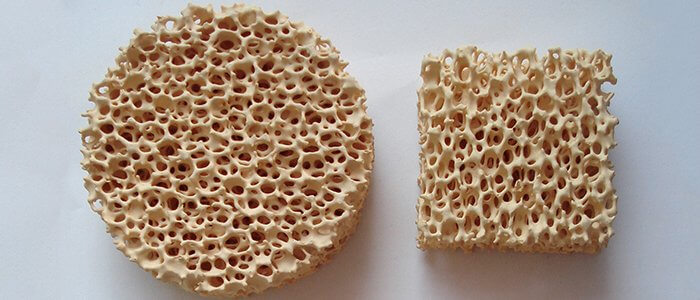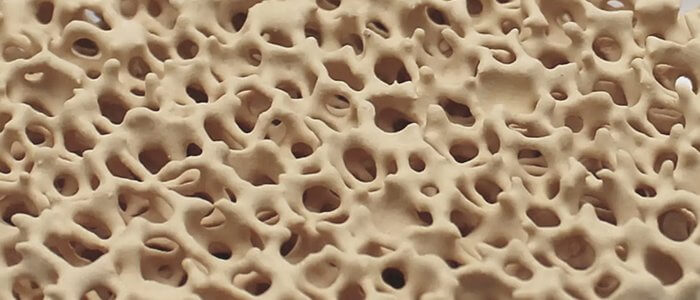Introduction:
The aerospace industry is renowned for pushing the boundaries of technology and engineering, driving innovation that shapes the way we explore the skies and beyond. One often overlooked aspect of aerospace manufacturing is casting, a versatile process that has undergone remarkable advancements over the years. In recent times, the integration of zirconia and magnesium ceramic foam filters has emerged as a transformative development in aerospace casting. This article delves into the intricacies of casting within the aerospace sector and explores the fascinating applications of zirconia and magnesium ceramic foam filters in enhancing the quality and performance of aerospace components.
Casting in Aerospace: A Fundamental Manufacturing Technique
Casting is a manufacturing technique that dates back thousands of years and has evolved significantly to meet the demands of modern aerospace engineering. The process involves pouring molten metal or alloy into a mold, where it solidifies and takes the shape of the mold cavity. Aerospace components produced through casting range from engine turbine blades and structural aircraft components to intricate spacecraft parts. The casting process offers numerous advantages, including the ability to produce complex geometries and near-net shapes, reducing the need for extensive post-processing.
The Crucial Role of Zirconia Ceramic Foam Filters
One of the challenges faced during casting in the aerospace industry is the presence of impurities and inclusions that can compromise the integrity of the final product. This is particularly critical in aerospace, where components must withstand extreme temperatures, pressure differentials, and mechanical stress. Zirconia ceramic foam filters have emerged as an ingenious solution to address this challenge. Zirconia, a high-strength ceramic material known for its exceptional thermal and chemical stability, is used to create intricate foam filters.

These filters are strategically placed within the mold cavity prior to the casting process. As molten metal is poured into the mold, it passes through the zirconia ceramic foam filter. The filter’s porous structure acts as a sieve, capturing impurities and preventing them from entering the cast metal. The result is a cast component with significantly reduced defects, improved mechanical properties, and enhanced structural integrity.
Enhancing Aerospace Component Quality
The aerospace industry demands components of the highest quality to ensure the safety and reliability of aircraft and spacecraft. Zirconia ceramic foam filters play a pivotal role in achieving these standards. By effectively removing impurities, these filters contribute to the production of flawless components that meet stringent industry specifications. This is particularly important for critical aerospace components such as turbine blades, which must operate under extreme conditions without failure.
Moreover, the use of zirconia ceramic foam filters minimizes the need for post-casting processing, reducing manufacturing time and costs. Components that are cast with reduced defects require less extensive machining and finishing, translating to shorter lead times and increased efficiency in aerospace production.
Magnesium Ceramic Foam Filters: Lightweight Innovations
In addition to zirconia filters, magnesium ceramic foam filters have gained prominence in aerospace casting applications. Magnesium, known for its low density and excellent strength-to-weight ratio, is a favored choice for aerospace components where weight reduction is paramount. Magnesium alloys are often used in aircraft and spacecraft to minimize overall weight and improve fuel efficiency.

However, the casting of magnesium alloys presents its own set of challenges, including susceptibility to oxidation and gas porosity. This is where magnesium ceramic foam filters come into play. Similar to their zirconia counterparts, these filters are placed within the mold to filter out impurities and gases from the molten magnesium alloy.
The unique advantage of magnesium ceramic foam filters is their compatibility with magnesium alloys, allowing for efficient filtration without chemical reactions that could degrade the alloy’s properties. By achieving a cleaner and more uniform casting, these filters contribute to the production of lightweight aerospace components with improved mechanical characteristics.
Aerospace Applications of Ceramic Foam Filters
The aerospace industry spans a wide range of applications, from commercial aviation to space exploration. Ceramic foam filters, whether composed of zirconia or magnesium, find diverse uses across these applications.
1. Gas Turbine Engines: The heart of any aircraft, gas turbine engines rely on precise and durable components. Zirconia ceramic foam filters ensure that turbine blades and other high-temperature parts are free from impurities that could lead to premature failure or reduced efficiency.
2. Aircraft Structural Components: Zirconia filters are used in the casting of structural components such as wing ribs and fuselage sections. By minimizing defects and ensuring uniform material properties, these filters contribute to the overall strength and reliability of the aircraft’s structure.
3. Spacecraft Propulsion Systems: In the harsh environment of space, propulsion systems must be engineered for utmost reliability. Ceramic foam filters aid in the production of components that can withstand the rigors of space travel, ensuring mission success.
4. Satellite Components: Miniaturized satellites, or CubeSats, often require intricate components that are cast with precision. Ceramic foam filters play a role in producing these components with minimal defects, enabling CubeSats to fulfill their intended functions.
Future Prospects and Challenges
The integration of zirconia and magnesium ceramic foam filters into aerospace casting is just the beginning of a new era of innovation. As the aerospace industry continues to advance, there are several areas where these filters could play an even more significant role.
Advancing Filter Designs
Ongoing research and development in material science and engineering are likely to yield improvements in ceramic foam filter designs. Engineers are exploring ways to optimize the filter’s porosity, structure, and geometry to achieve even more efficient filtration. This could result in filters that offer higher impurity removal rates, better flow dynamics, and reduced turbulence during the casting process.
New Materials and Alloys
Aerospace engineers are always on the lookout for new materials and alloys that offer superior performance, whether in terms of strength, temperature resistance, or corrosion resistance. As novel materials are introduced into the aerospace manufacturing landscape, the compatibility of zirconia and magnesium ceramic foam filters with these materials will become crucial. Researchers may need to adapt and customize filter compositions to ensure optimal performance with emerging alloys.
Integration with Additive Manufacturing
Additive manufacturing, or 3D printing, has gained traction in aerospace manufacturing due to its ability to create complex geometries and reduce material waste. Integrating zirconia and magnesium ceramic foam filters into the additive manufacturing process could help enhance the quality of 3D-printed aerospace components. By filtering out impurities from the precursor materials, filters could contribute to the production of flawless parts with uniform properties.
Sustainability and Environmental Impact
As industries worldwide prioritize sustainability and environmental responsibility, aerospace manufacturing is no exception. The production of ceramic foam filters involves energy-intensive processes, and researchers are exploring ways to minimize the environmental impact of filter manufacturing. Additionally, the reusability and recyclability of these filters are important considerations for a greener aerospace manufacturing ecosystem.
Overcoming Challenges
While zirconia and magnesium ceramic foam filters offer numerous advantages, they also present challenges that need to be addressed. For instance, ensuring consistent filter quality and performance across large-scale manufacturing operations can be complex. Quality control measures, testing protocols, and standardized manufacturing processes will be essential to mitigate variations in filter efficiency.
Furthermore, the economic feasibility of using these advanced filters must be carefully evaluated. While they contribute to improved component quality and reduced post-processing requirements, the initial cost of incorporating ceramic foam filters into the casting process may impact the overall manufacturing cost. Striking a balance between enhanced quality and cost-effectiveness is crucial for their widespread adoption.
Conclusion:
The aerospace industry’s unyielding pursuit of excellence has driven continuous innovation across various domains. Casting, a foundational manufacturing process, has witnessed a transformative evolution with the incorporation of zirconia and magnesium ceramic foam filters. These filters, designed to remove impurities, enhance material properties, and improve the overall quality of aerospace components, stand as remarkable contributions to the field.
As aerospace technology advances further, zirconia and magnesium ceramic foam filters are poised to play an even more integral role. Their compatibility with new materials, integration into additive manufacturing processes, and potential for reducing environmental impact highlight their adaptability to emerging trends. Overcoming challenges related to quality control, cost, and scalability will be essential to unlocking the full potential of these filters in aerospace manufacturing.
In essence, the combination of aerospace casting and ceramic foam filters exemplifies the industry’s commitment to pushing boundaries, fostering innovation, and creating components that redefine the limits of performance, safety, and exploration. With each successful flight and mission, these filters contribute to the narrative of human achievement in the aerospace realm, and they will undoubtedly continue to shape the trajectory of aerospace manufacturing for years to come.


